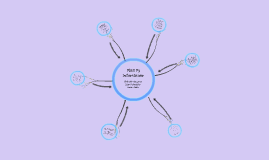Research Methodology
Transcript: Staggering Statistics Exercise! Although MSK pain and disease has a lower visibility then heart disease, respiratory conditions, and cancers, it is much more prevalent. ~Burden of MSK Disease in USA, 2008 In 2005, the American Academy of Orthopedic Surgeons reported 107.7 million adults (one in two aged over 18) suffered from a MSK condition lasting more then three months in the past year. 2x the number of any other medical condition Whats the burden of these statistics? $6-12 Billion cost of treatment annually in Canada $61.2 Billion in lost productive time in the U.S. $510 Billion in cost of treatment for 2004 in the U.S. $339 Billion in indirect cost (primarily lost wages) in the U.S. ~Jacobs 2009 A total cost of $849 Billion or 7.7% of the U.S. GDP Guess who makes up 63% of these costs? Check Your Paper! Chronicity accounts for 5-10% of the affected population but yet accounts for 63% of the costs associated with it! Costs are still rising...between 1996-2004, there has been a 49% increase in treating this subgroup (primarily from tertiary management of pharmacy and surgical interventions) Hogg-Johnson et al., 2008 Clearly, based on epidemiology and the economic burden, MSK pain/disorders poses a large problem Chiropractic management of MSK pain/disorders has been proven to reduce/prevent chronicity, be clinically effective AND cost effective in managing MSK conditions. ~Korthals 2003 Chiropractic integration could then be seen as an ideal intervention for an area of medicine historically neglected ~New Zealand Chiropractic Inquiry, 1974 Pros's; Previously utilized in IHC initiatives Respondents are asked to recall their first day of the intervention and report on a 10 point scale (1 being no pain relief or activity increase, 10 being total relief or recovery of all activities) how they report pain and activity levels at present (post intervention) Has not been validated in the literature, but provides a subjective global assessment of pain relief and activity increase, while providing quantitative data that can be compared to other IHC initiatives for further analysis ~Brown et al, 2005 ~Jacobs 2009 Referral mechanisms, practice guidelines, treatment planning, decision-making and reimbursement strategies. ~Mior et al. 2009 Qualitative Methodology Strengthens the methodology by limiting the inherent weaknesses found in both quantitative and qualitative methods by combining them Allows for the unrestricted use of methods/tools of data collection, rather then being restricted to specific methodological confines and the specific data they collect Allows for the use of multiple paradigms & views Practical since it allows the researcher to use all or any methods to address a research problem Quantitative Data Collection; Clinical Efficacy Semi-structured in-depth interviews preformed twice through the study (6 months, and 1 yr conclusion) 10-15 Participants made up of host facility practitioners, administrators, referring physicians, and collaborative practitioners. Interviews performed until data saturation is reached Interviews audio-recorded, transcribed, and analyzed for basic content analysis using qualitative software Draws on employing "what works," using diverse approaches, giving primacy to the importance of the research problem and question, and valuing both objective and subjective knowledge (Morgan 2007) "A more formal relationship where health care professionals are subsumed under a common policy, administration, formal structure, and sharing of a common vision of care delivery" ~Mior et al. 2009 Chiropractic What are patient's MSK health outcomes and host facility practitioner's experiences with the integration of a Chiropractor for the management of MSK conditions? Patients referred to for Chiropractic services by general practitioners of the PCN This arm of the study will evaluate whether the introduced service was effective in reducing or alleviating MSK pain and related disability (Clinical Outcomes) ~Grisanti Report, 2002 Pragmatism moves beyond these problems by focusing on one central matter; "Whether or not the information produced is useful in the sense of helping people to better cope with the world or to create better organizations" (Nord & Connell 2011) "Pragmatism accepts that certain metaphysical and epistemological questions are vexing and seemingly irresolvable" (Nord & Connell 2011) The Setting; The Intervention Not an easy methodology and can be time consuming Vast amounts of time spent collecting and analyzing both quantitative and qualitative data Demands mastery of both qualitative and quantitative methods Qualitative Sample Applied Ethnography; concerned with the study of social life in naturally occurring settings (Denzin, 1997) Involves multiple methods that secure an in-depth understanding. A form of triangulation as an alternative to validation (Denzin, 1997) Applied in the sense that the phenomena is studied in its everyday context, but with an attempt to make sense

















